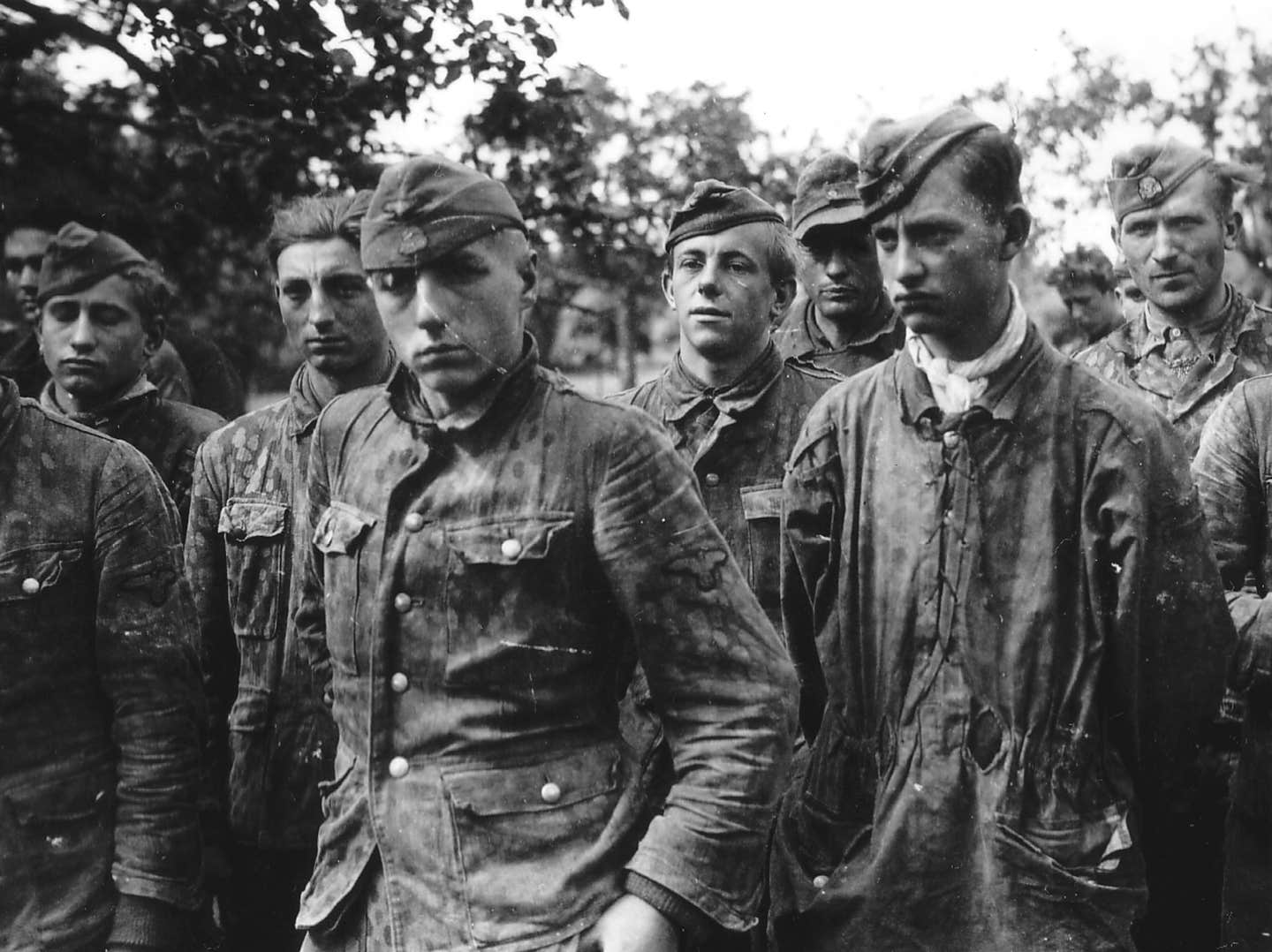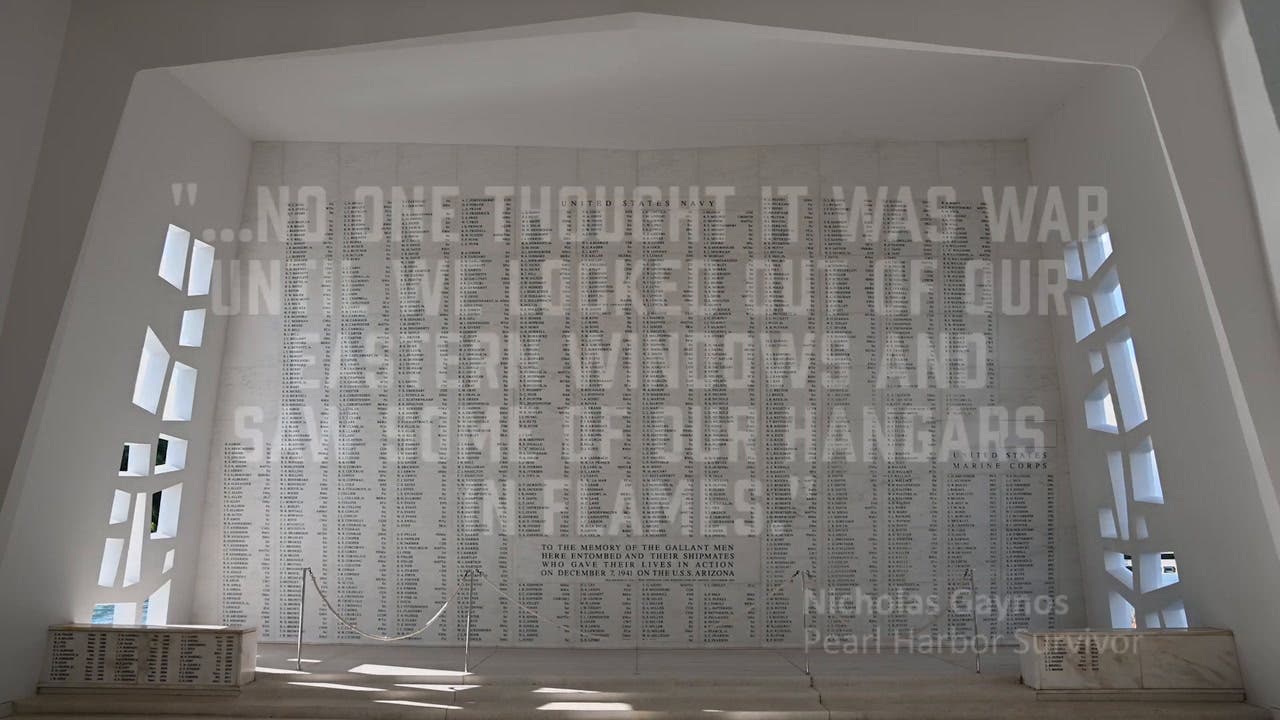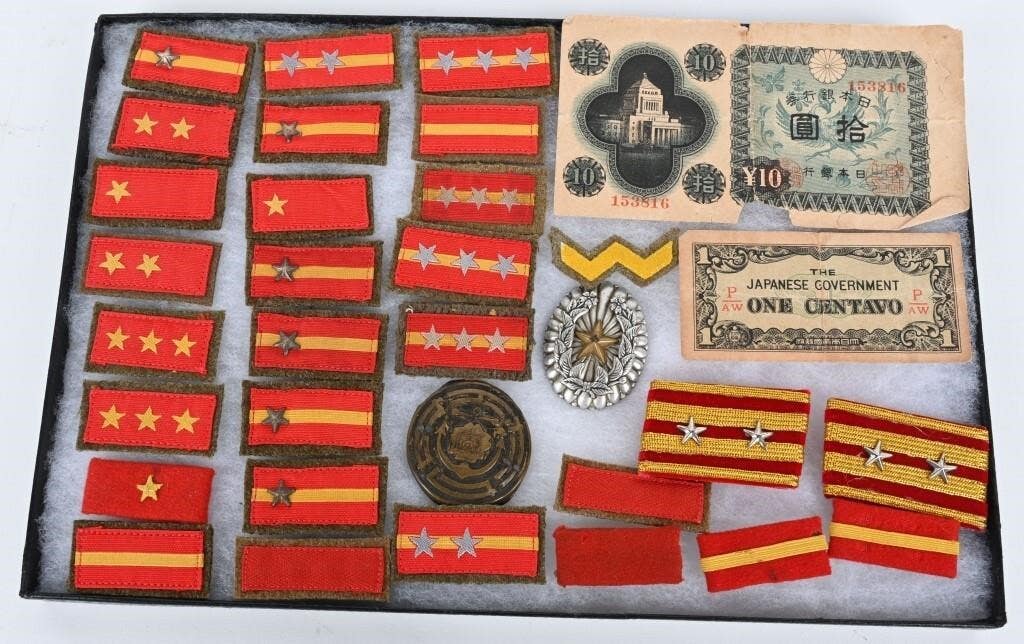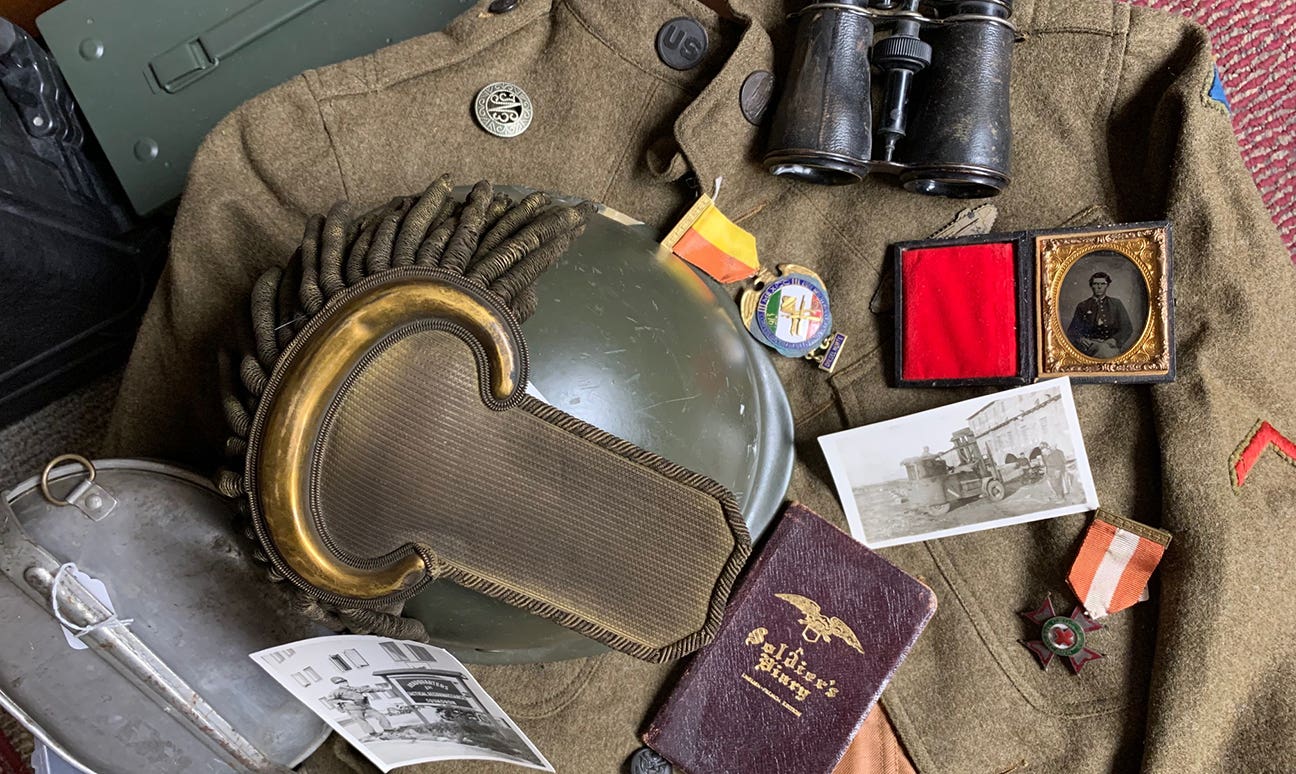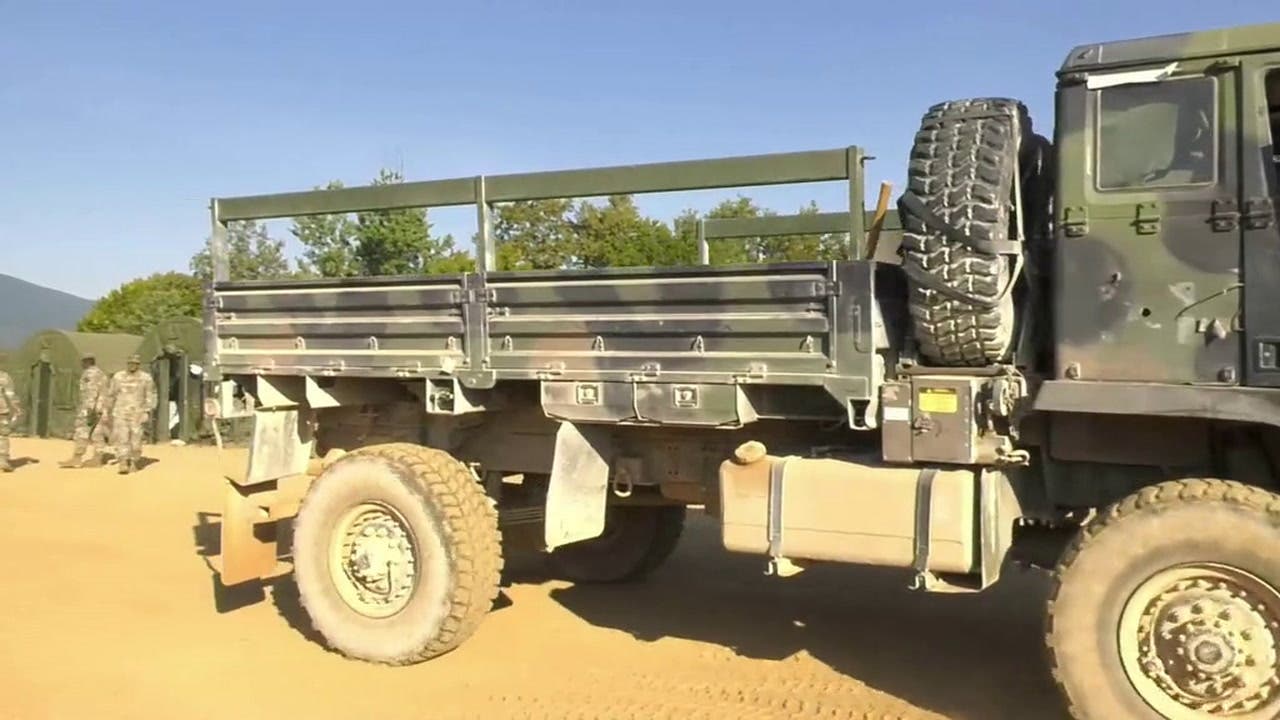A rough-cast brass memory
During a recent visit to my folks’ home in southeast Minnesota, I found a little time on my hands between taking my Mom to church and doing all the chores…
During a recent visit to my folks’ home in southeast Minnesota, I found a little time on my hands between taking my Mom to church and doing all the chores she had posted on the door of the coffee cup cupboard (where I was sure to see it!). Instead of assuming a position on the living room floor in front of the television—a position I have relished since a young boy— I decided I owed a visit to an old friend who now resides in the town’s small nursing home. That short visit reminded me of a valuable life lesson a good man taught me many years ago.
Though nearly six months had passed since we last visited, Mrs. Ragnild St. Mary—who was born before the United States entered World War I and nearly 97 years old—recognized me the moment I walked into her room. Just finishing her lunch, she gently tugged on my arm and invited me to sit with her.
After she commented on the small vase holding a tulip and jonquil that I had snipped from my Mom’s flower garden, we both quickly lapsed into fond reminiscences. I can’t visit Mrs. St. Mary without her commenting, “Oh, I remember you at your Dad’s store! You were so cute with your little white apron—you always had such a nice smile!” But once that embarrassing memory is covered, we both dig a little deeper.
On this particular visit, Mrs. St. Mary spoke at length about her girlhood home in Iowa, her father—a blacksmith, and, of course, her dearly departed husband, Harold. Harold was a big man, very skilled at metal work and a devoted lover of history. When I was about 12 years old, he took a great deal of time to share his love of history with me.
VISITS AFTER SCHOOL
When I was a boy, Caledonia, Minn., boasted a population of about 1,800 people. My family’s big Victorian home was located about three blocks from the parochial school where my three brothers, sister and I attended and about three blocks in the opposite direction from our family-owned grocery store. All of the kids in our family were required to work at the store after school each day for a couple of hours. If we didn’t walk home first, the route to the store took us right past Mr. St. Mary’s shop.
Mr. St. Mary’s shop consisted of a long, deep garage with a big door on one end. The shop had at least two lifts, one behind the other, where he was able to complete wheel alignments, tire rotations and general repairs. Long workbenches lined both of the walls. Always neat and clean at the end of the day, they were often covered with parts and tools if you visited earlier in the day.
The big treat at Mr. St. Mary’s shop was when the big sliding door on his neighboring shop was open. If it was, one could see his large collection of brass era and pre-WWII vehicles. In Mr. St. Mary’s spare time, when he wasn’t repairing cars, trucks or farm machinery, he restored early pioneer automobiles—many with local provenance.
When I would stop in after school, Mr. St. Mary always laid down the tool or part he was holding, picked up a cloth to wipe the grease from his powerful hands and erect his massive frame to look down at me. To some, his gaze may have been a bit unsettling—it always looked as though he was studying you closely with one eye partially closed—the result of a farm accident. I never took a second notice of it. In fact, I think it was that special gaze that always made me believe he was thinking hard about my response to his questions. The truth is, I was more interested in what treasures he was restoring to ever take notice of much else!
One day, he was wiping off a piece of metal about the size of a small coffee cup when I popped in the front door. “Whatchya working on, Mr. St. Mary?”, I presumptively asked avoiding any formal salutation. He looked down at me, wiped the bright brass piece one last time and handed it to me, “This is the last one I had to make.” It was a turned brass cap with an octagonal-shaped cover. “Maxwell” ran across the top in engraved, elaborate script.
“What do you think?” he asked as I turned the mirror-bright brass cap over in my hands. He looked straight at me as I turned the hubcap around in my hands. He explained it was the type of hubcap used on Maxwell automobiles built before World War I. He showed me the original he had copied. When I placed the original on the counter next to the three newly crafted replicas, I was amazed by the exactness of the reproductions.
After looking at other projects in both of his buildings, it was time to report to the store for my evening job. But, as I walked the block and a half to the store, my mind was racing…I was thinking about how Mr. St. Mary had taken a roughcast piece of brass and turned it into something gorgeous. I was figuring out how I could do the same to further my true passion—Civil War weapons.
GOOD OL’ DIXIE GUN WORKS
I suppose a lot of guys, now in their 40s, 50s or 60s, can relate to the hours I spent studying Turner Kirkland’s annual bible of muzzle loading: the Dixie Gun Works Catalog. I can’t begin to tabulate the hours I laid in bed studying page after page of rifles, revolvers, accouterments and parts, only to dream about the fun I would have one day shooting and collecting. Occasionally, I would actually find some trinket for $5 or $10 that my Dad would allow me to order (now that I think about it, this is probably when I developed my love of sending away for relics!).
The evening after visiting Mr. St. Mary’s shop and seeing those magnificent hub caps, I found myself daydreaming—once again—over the pages of the Dixie Gun Works catalog. Unlike other sojourns into hundreds of pages, I didn’t turn to the Civil War rifles, the pages of Civil War headgear or even those filled with hundreds of books to circle in the hope of eventually having my own “research library” (is it a wonder I never had a girlfriend?). On this particular night, I turned to a section I had never studied before: Rifle and Handgun Kits.
Before that day, I had been pestering my Dad about buying another cap-and-ball revolver. We already had an Italian-made reproduction of a Colt 1851 Navy revolver, but I really thought a full-frame revolver, like a Remington, would provide the opportunity for having multiple cylinders to quickly load into the frame when all the rounds from the previous cylinder had been fired (yes, I harbored delusions of “speed-shooting” with a cap-and-ball revolver!). In my Dad’s mind, one black powder revolver per family was quite sufficient. I wasn’t going to impress him with the need for a second.
Though I was earning money of my own in my after-school job at the store, I was still required to receive my parents’ approval for any “large purchases.” I don’t think “large purchases” were ever defined with a specific dollar amount, but I decided that meant, “Anything over $70.”
And now, you will understand how, on that particular evening, it all made perfect sense to me to order a kit of a Civil War Confederate Spiller and Burr brass frame revolver for only $69. With the skills Mr. St. Mary could impart to me, I could build a full-framed revolver for less than one would cost my Dad if I could convince him to buy it. I filled out the order form, tore it out of the back of the catalog, addressed the envelope and crawled back into bed. I would have to wait until the next day when I could take my summer’s savings to the Post Office and buy a money order (I wasn’t going to run the risk of parental scrutiny by asking either Mom or Dad to write a check!).
WHAT DID I GET MYSELF INTO
While I waited for the kit to arrive, I studied everything I could find on metalworking. I was certain I could effectively blue the steel parts that required bluing. I was confidant I could case harden the hammer by wrapping it in clay and burying it in a coal fire (not realizing Kingsford charcoal was something entirely different from “coal”). I was certain it would be only a matter of days after the revolver kit arrived, that I would be able to boast to Dad my finished revolver cost only $69.
When the kit arrived, I ran to our basement workshop and pushed a place clear of clutter on the ping-pong table. When I opened the box, I was overwhelmed. It was just a box of parts. No instructions. Just parts.
There was a bag of unblued screws and springs; a bright steel barrel; two unfinished wooden slab grips and, most troubling of all, a very crudely, roughcast brass frame. It was then I realized it: I was in over my head.
I sorted the parts into piles: Things to be blued; things to be casehardened; grips to be sanded and stained and the last: The brass frame. For the next couple of days, I ignored the brass frame. Instead, I dug up some clay from our garden, covered the hammer with it and dropped into a big charcoal fire in our grill. After an hour or so, I pounded the clay off the hammer and dropped it into a can of motor oil. I don’t even remember where I read that this was a method for casehardening steel, but it did produce a feint hint of coloring reminiscent of true hardened steel.
I used cold blue to apply layer after layer of color to the barrel and other small parts. While waiting for the color to penetrate, I sanded and polished the wood grips. When I fitted them to the frame, however, I was reminded that eventually, I would have to deal with the rough brass casting.
This was in the early days of Dremel tools. Dad had bought one of the little, high-speed drills along with a wide array of bits for sanding, grinding and drilling. I figured this would be ideal for grinding the roughness off the frame and imagined a smooth, highly polished finish. The reality of my Dremel work, however, was quite the opposite: Heavy gouges through the heavy casting into the surface of the frame. Not good. Not good at all.
Figuring I had ruined the frame, I sat at the ping-pong table deeply dejected when I remembered Mr. St. Mary’s hubcaps. I ran out the screen door and picked up my stingray to ride over to his shop.
Showing him the frame, I asked him if it was ruined. “No, not at all. Let’s see what we can do.” He walked over to his grinding wheel and expertly ground small amounts of the roughness away. Then, he applied some rouge to a buffing wheel and ran it over the section just ground clean. When he showed it to me, the top of the frame looked factory finished! “You take it home and work on it some more,” he told me as he handed the still warm frame to me. “Bring it back when you are done.”
I took it home, and realized that polishing the frame was going to be a slow, laborious task with little opportunity to use something like a high-speed drill (except for the final buffing with rouge). Over the next two months, I continued to work on the frame. Finally, I was ready to take it back to Mr. St. Mary.
Turning the frame over in his large hands a second time, he studied my work. The way he squinted with one eye made me think he was truly scrutinizing my work and was going to announce imperfections to me. Instead, he walked over to his buffing wheel, started it, applied some rouge and pressed the frame into the spinning cotton wheel. Turning and rotating the frame, he continued the buffing process for about five minutes. He switched off the wheel and while it spun out its high revs, he looked the frame over. About the time the wheel stopped spinning, he handed the frame to me. “There. You did a good job.” That’s all I remember him saying to me. I probably don’t remember because I was simply amazed with how good that brass frame looked. His expert polishing had evened out any blemishes my files, emery paper or even, Dremel grindstones, had left. It looked every bit as beautiful as the hub cabs he had shown me nearly six months earlier.
Though the story of the frame ends here, that of the revolver does not. Don’t forget, I had no instructions for assembling the revolver! The best guide I could find was an exploded view of a Colt Model 1860 revolver. I spent days trying to make the parts of my kit fit the frame. Over the next couple of weeks, I had no success assembling the parts. In fact, I gave up, putting all the parts in a coffee can that I then hid under my bed. I didn’t want my Dad to find out how I had “wasted” money on a kit I couldn’t build.
Coincidentally, one of Mr. and Mrs. St. Mary’s sons (who was about seven years older than me) was studying to become a gunsmith. I used to hang out in Alan’s little shop reading Shotgun News as he worked on various hunting rifles and shotguns. One day, I saw him working on a .22 caliber revolver, when it occurred to me: Alan would know how to assemble the revolver hidden under my bed! I jumped up, told Al I would “Be right back,” and hopped on my bike. Returning to the shop with the coffee can under my arm, I asked, “Do you think you can put together a revolver with no instructions?”
Allan dumped the parts out on his table. The hammer had a fine coating of rust, as did the barrel—neither my casehardening nor my bluing had been very effective. He smirked at me and said, “Looks like it needs a little work.” I muttered something about, “Yeah, I guess it is a pretty cheap kit…do you think you can build it?” He told me to leave it with him and he would see what he could do.
It was probably a couple of months when Allan told me to stop by his shop. When I got there, he said nothing. Rather, he just handed over a gorgeous brass-framed revolver with dark blue barrel, blue-and-gray mottled hammer and deep brown walnut grips. I recognized it as a Spiller and Burr, but it never occurred to me it was my Spiller and Burr.
Alan just smiled…and looked at me much the same way his Dad looked at me. I stammered something about how this couldn’t be my gun. Alan replied, “Yep, that’s it.”
It was gorgeous. Clearly, Alan had inherited his father’s skill and patience with restoring cars and redirected it into his own passion of gunsmithing. I hadn’t found the easy path to a full-framed cap-and-ball revolver that I thought I had when I bought the kit.
It took nearly half a year, but I had learned to exercise patience when working with metal and more importantly, realized that I don’t have to be an expert in everything. Knowing who the experts are simply multiplies one’s ability to achieve personal goals…whether in their hobby or business.
I wish I could say, “I still have that revolver,” but like so many cool items I have owned, I traded or sold it as I leveraged some deal to acquire some other piece of militaria. Thankfully, the Sunday morning visit with Mrs. St. Mary brought back the memory of how her husband and son helped me overcome a hurdle of disappointment and embarrassment on my path to becoming a collector.
Cherish the Memories,
John Adams-Graf
Editor, Military Trader and Military Vehicles Magazine
John Adams-Graf ("JAG" to most) is the editor of Military Trader and Military Vehicles Magazine. He has been a military collector for his entire life. The son of a WWII veteran, his writings carry many lessons from the Greatest Generation. JAG has authored several books, including multiple editions of Warman's WWII Collectibles, Civil War Collectibles, and the Standard Catalog of Civil War Firearms. He is a passionate shooter, wood-splitter, kayaker, and WWI AEF Tank Corps collector.



